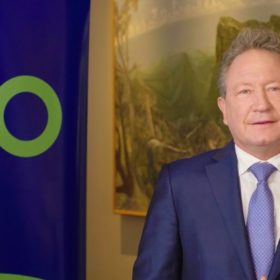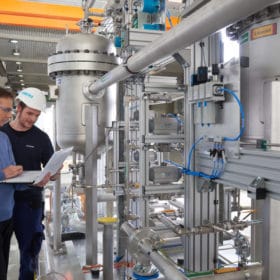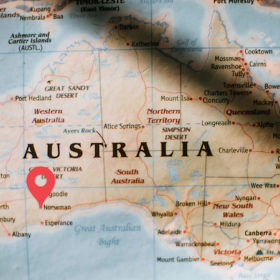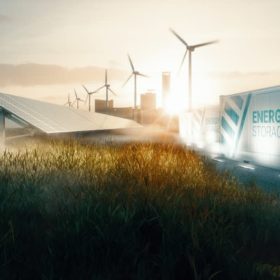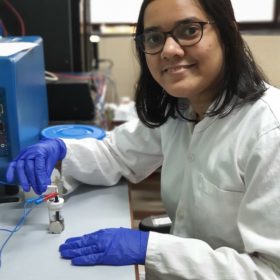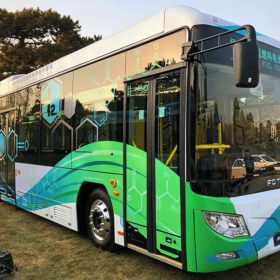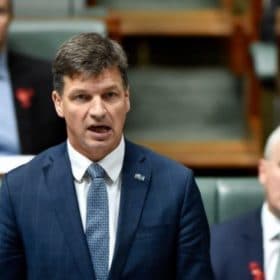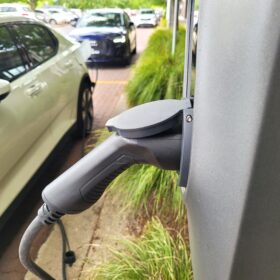Twiggy Forrest’s green hydrogen ambitions will require renewables at 3x Australia’s total energy consumption
In a campaign style speech, Andrew ‘Twiggy’ Forrest, founder of Fortescue Metals and one of Australia’s richest men, outlined his ambition of producing mammoth quantities of green hydrogen, a task he sees as imperative to stop the “planet cooking” while also cornering a market he believes will soon be worth trillions.
Blue is not the new green
A new study from Stanford University and Cornell University shows that blue hydrogen can produce more greenhouse emissions than heat produced by coal and gas. The modelling classifies blue hydrogen emissions as carbon dioxide and unburned fugitive methane, as well as lifecycle emissions linked to the mining, transport, storage, and use of methane.
Saturday read: Dirty double standard on display
Australia’s proposed 26 GW Asian Renewable Energy Hub has encountered what appears to be a governmental double standard, as the country’s environment minister has rejected an expanded proposal. Thankfully, the project’s proponents have not become discouraged in the face of this double standard; in fact, they’re doubling down.
bp study confirms Australia’s green hydrogen export potential, and calls for carbon price
A bp Australia study partially supported by the Australian Renewable Energy Agency has confirmed the technical feasibility of large-scale renewable hydrogen and ammonia production for export in Australia, particularly in Western Australia’s Mid-West. However, the development of such an industry, says bp, requires strong government policy support, including a carbon price or emissions cap.
Indian researchers increase hydrogen yield three-fold while using less electricity
Researchers at the Indian Institute of Technology Bombay (IIT Bombay) have devised a method that increases hydrogen production up to three times while significantly lowering the energy required for water electrolysis.
‘Good portion’ of NSW’s bus fleet to run on hydrogen as state launches collaboration platform
As Australia’s most populace state, New South Wales, prepares to put out its hydrogen strategy roadmap later this year, the state is planning to use hydrogen to power its public transport fleets and will soon launch a digital collaboration portal.
Indian tenders hydrogen fuel cell technology for trains
The Indian Railways initially plan to convert diesel-powered trains in the 89km Sonipat-Jind section of Northern Railway to run on hydrogen. The hydrogen fuel cell retrofitment kit, along with the balance-of-plant and energy storage and hydrogen storage modules, will replace the existing power-train items onboard 1,600HP diesel-electric multiple unit (DEMU) rakes.
South Australia identified as possible base for international hydrogen supply chain
Japan’s biggest oil refiner Eneos and French renewables developer Neoen have announced they will undertake a joint study looking at the potential development of an international supply chain for an affordable and stable supply of green hydrogen produced from renewable energy in South Australia.
Australian firm partners with JSW Energy on green hydrogen projects in India
Australia-based Fortescue Future Industries has partnered with JSW Energy arm on green hydrogen production and application in India.
Taylor makes second attempt at knifing ARENA
The Morrison government and Energy Minister Angus Taylor have made a renewed attempt to expand the remit of the Australian Renewable Energy Agency to include technologies using fossil-fuels. The Senate, which blocked Taylor’s previous attempt to illegally siphon funding from renewables in June, is set to sit today and the outcome is far from certain.
